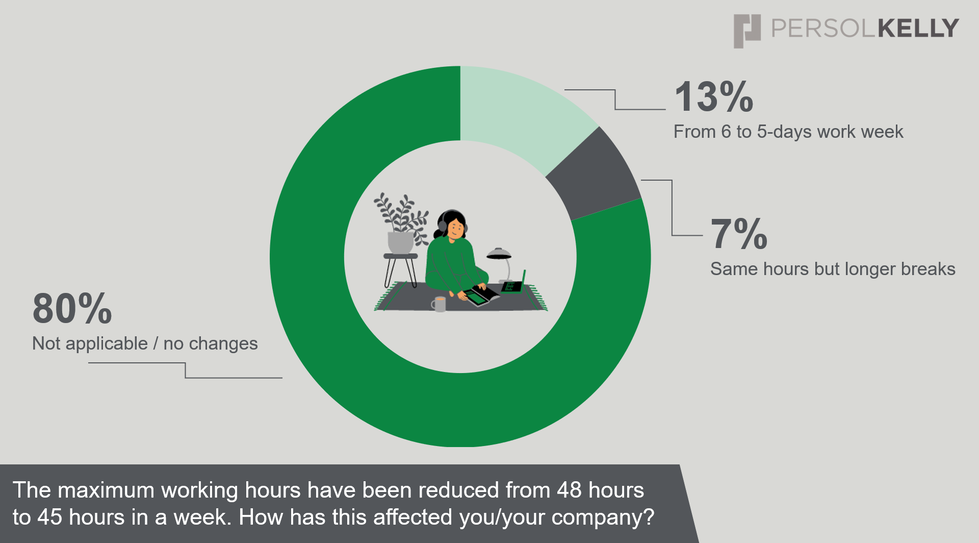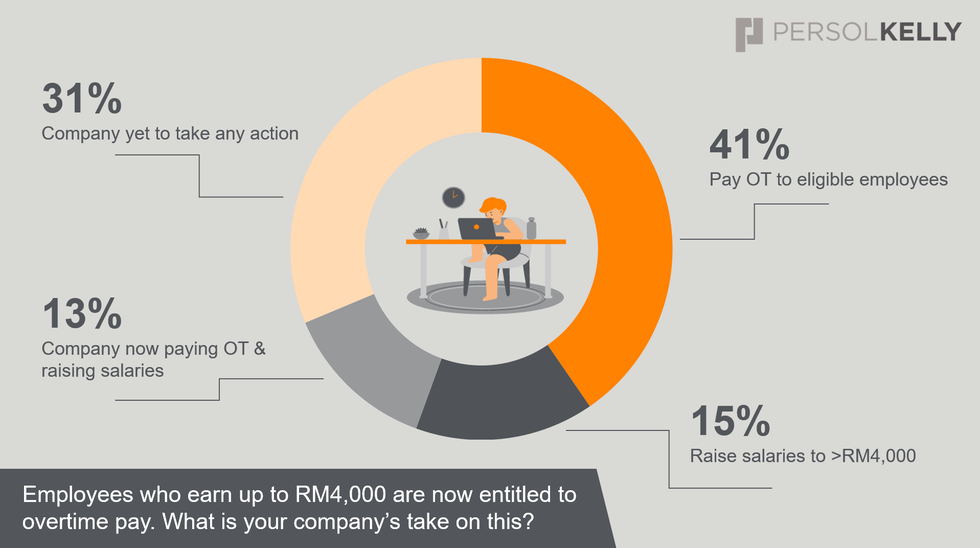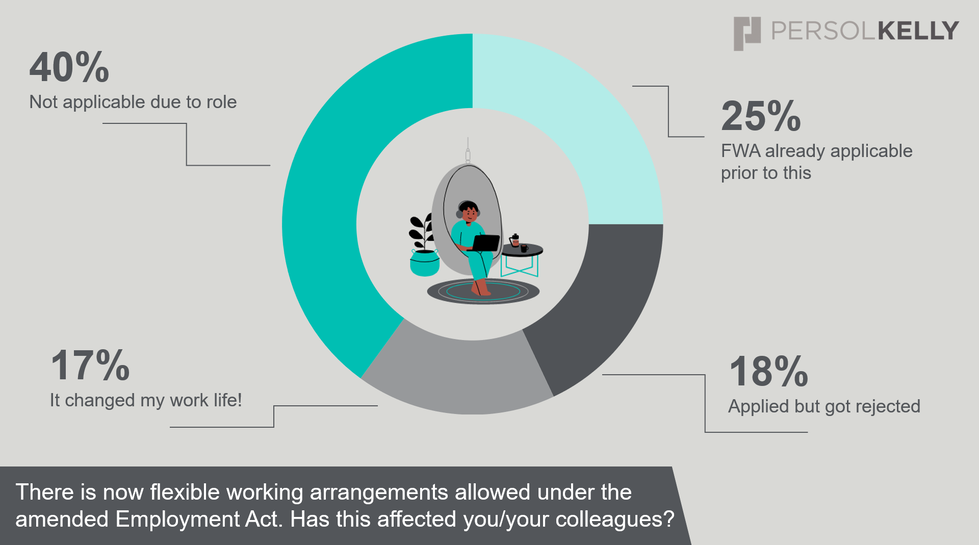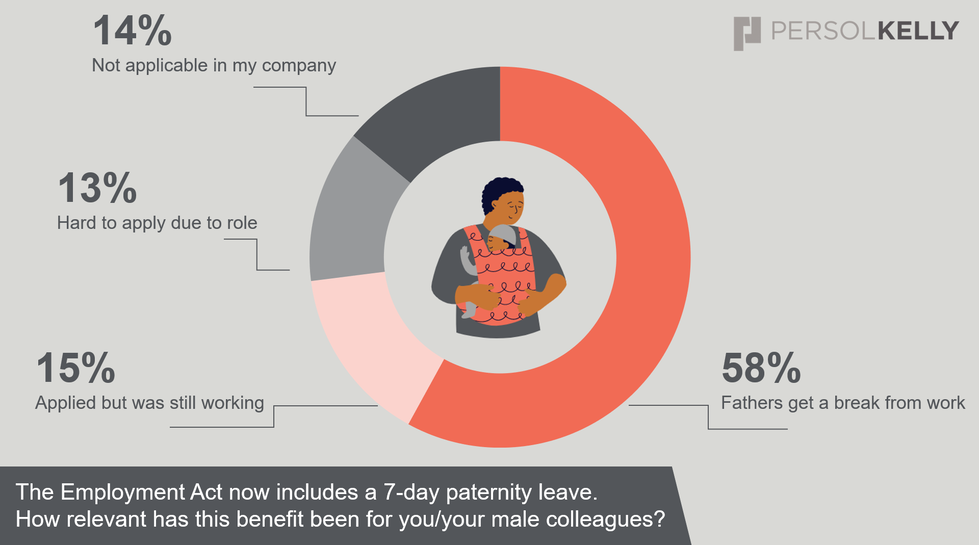MALAYSIA | As someone who has worked in the human resources field for close to 20 years, I have seen and experienced first-hand the changes in the job landscape. In the past, the focus was on compliance with labour laws and for employees, job security. Employee welfare was often an afterthought. Over time, the economy grew and competition increased, so the job market became more dynamic. This led to a shift in human resources practices, with more attention being paid to issues such as fair compensation, work-life balance, and career development.
With the recent Employment (Amendment) Act which seeks to strengthen employee protections, a number of significant changes were made to the First Schedule of the Employment Act introduced in 1955, affecting the workforce across Peninsular Malaysia and the Federal Territory of Labuan. The changes to the Act came into effect starting 1 January 2023 but to fully appreciate people’s sentiment with regards to the Act, PERSOLKELLY Malaysia conducted a series of polls on LinkedIn to hear from Malaysians on what they truly think about some of these amendments.
Overtime pay or salary hikes?
Prior to this, the Employment Act 1955 only protected employees who received monthly salaries of RM2,000 and below. With the recent amendment, the Act will now cover all Malaysian employees – no matter how much they are being paid. However, those earning above RM4,000 per month are exempted from certain provisions like overtime pay, which made us ask the question: how are Malaysian organizations managing and responding to this?
While the government may have intended to improve the livelihoods of employees through this amendment, the additional cost of managing overtime pay can be a burden to employers, especially those with a large bench of workers. From the employees’ point of view, overtime pay can provide extra income, but it can also result in heavier workloads and lead to longer working hours, which can be harmful to overall mental and physical health in the long run.
What employers can do is look into ways to increase productivity without needing to extend working hours. One approach is to adopt new technologies and augment their workforce capabilities. With the pace of technological advancements, there are newer and more improved productivity tools being introduced regularly, and employers need to consider investing in these tools to enhance workplace productivity. When used effectively, these tools can reduce time and costs spent on business operations, without compromising on quality or employee wellbeing.
Interestingly enough, 31% of the 704 respondents on our LinkedIn poll shared that their organizations have yet to take any action. On that note, we need to mention here that this poll was conducted at end February, merely two months since the Act was amended. It is therefore likely that this number will be lower by the time you read this article. Another important consideration is communication, as it is also likely that the changes were implemented within the organization but not communicated to the employee, which may rationalize the data we are seeing here.
41% said that their organizations are now paying overtime pay for eligible employees, 15% said that salaries have been bumped up to more than RM4,000, while 13% said that their organizations have done both – raise salaries and pay overtime to their employees.
New working hours has little impact on majority of organizations
Previously, workers in Malaysia had a statutory limit to the maximum number of working hours in a week, which was 48 hours or around eight hours per day, six days a week. With the amendment, the maximum number has now been reduced to 45 hours per week.
While reduced working hours can have benefits, there are also potential implications for both employers and employees. From a business perspective, organizations may see a decrease in output if they adjust their operating hours to account for the shorter workday. Alternatively, employers can choose to pay overtime to employees to abide by the amendment, but this incurs additional costs. Employees may also see a decrease in income. With the enforcement of the new maximum working hours, workload may be redistributed to other employees, and this can result in changes to wages.
We asked people on LinkedIn how this has affected their organization and 80% out of the 600 respondents engaged in the poll said that this has had no effect on them. This suggests that most organizations were either already complying with the new maximum working hours or have not implemented the changes appropriately.
Importantly, employees and employers must communicate to meet both sides’ needs. To build an effective long-term working relationship, there needs to be transparent and regular communication to identify the best approach so that productivity is not negatively impacted and needs of employees are still met.
Employers exercise caution on flexible work arrangements
Under the amended Employment Act, flexible work arrangement (FWA) is now safeguarded by law, meaning Malaysian workers now have the right to request varying working hours, days, and locations. This provides opportunities for discussions to take place on flexible work arrangements, but employers still reserve the right to decline these if there are grounds to do so.
One challenge that regularly comes up for employers is the difficulty managing employees who are working remotely. It is crucial that any FWA put in place within an organization does not negatively impact productivity, whilst considering the needs of their employees. Without proper planning and variations in work arrangements, employees may find it difficult to set boundaries between work and personal life, while others may struggle in communicating effectively with colleagues due to location, and sometimes even time differences.
From our poll results, 40% of 337 respondents shared that FWA is not applicable for them due to the nature of their jobs and we see that up to 18% of respondents had applied for FWA but were ultimately turned down. The remaining 42% of respondents in the survey have FWA in place, either from before or after 2023.
Clear guidelines and expectations must be established from the get-go for remote work to work. Both employers and employees also need to maintain active communication lines with each other. This can help alleviate productivity paranoia, where employers feel uneasy about whether employees are being productive and working on the right thing while away from their direct supervision.
Ultimately, the experiences of the pandemic have accelerated the shift towards remote work and employers need to recognize that FWA does not necessarily mean a drop in productivity. When done correctly, it may actually help in boosting workforce morale, enhancing work efficiency and quality instead.
Extended maternity leave sparks hiring concerns
Another change that should be seen as a welcome update is the increased entitlement of paid maternity leave for working mothers who are recovering post-delivery. Previously, the Employment Act provided for 60 days of maternity leave, but with the amendment, mothers of new-borns will now be entitled to 98 days to recuperate.
On the flip side, extended maternity leave may result in increased costs for employers due to the need for temporary replacements or additional resources to cover the workload of absent employees. This may impact the productivity of the remaining team members and result in being overworked. Ultimately, the amendment may lead to a perception that hiring females will result in increased costs and this may lead to bias in the recruitment process, with employers preferring male candidates over female candidates.
Given the significant increase in maternity leave days, we asked the people on LinkedIn what impact this will have on recruiting female employees and 52% of the 437 respondents opined that fewer females will be hired due to the amendment. These results do reflect some of the fears people have had regarding this amendment, as it may impact the recruitment of women and potentially widen the gender gap in the Malaysia workforce.
To address these challenges, employers need to consider a few things – the first of which is employee loyalty. Loyalty is a challenge in the current employment landscape, and it is no secret that employers that take good care of their employees will earn their loyalty. By providing the care needed to mothers, and ensuring they have the time needed for maternity care, employers can expect a happy and loyal employee to return stronger and more mature than before.
The next is to explore alternative work arrangements such as remote work, job sharing, or part-time work. These arrangements can help mitigate the financial burden on employers by allowing them to adjust their staffing needs while still providing support for mothers of new-borns. Most importantly, employers should strive to eliminate bias in the recruitment process by focusing on the skills and qualifications of candidates rather than gender.
Progressive move enables new fathers to find work-life balance
In line with the Employment (Amendment) Act, the government introduced paid paternity leave, allowing male employees who are fathers of new-borns to take up to seven days of paid leave.
Unfortunately, stigma may be attached to employees taking paternity leave, leading to discrimination that discourages employees from utilizing their leave entitlements. From the employers’ point of view, like the extension of maternity leave, employers may struggle with managing the workload of team members covering for an absent employee. In both cases, having a plan in place will be key and leveraging FWA may be an option that employers can consider to ensure work continues smoothly.
When we asked the public about how relevant this amendment has been in their organization, 58% of the 229 respondents answered that this has enabled male employees to take a break from work and focus on family. This suggests that the introduction of paid paternity leave has had a positive impact on the work-life balance of fathers of new-borns.
It must be emphasized that this is ultimately a balancing act. The onus is on the employers, who need to promote a culture of gender equality in the workplace and ensure stigmas do not exist, be it for maternity or paternity leave.
There are aspects that need to be addressed to ensure that the Employment (Amendment) Act achieve their intended outcomes. 36% of respondents shared that the lack of support from management is one of the main setbacks when it comes to bringing to life the changes. All in all, while the amendments to the Employment Act are commendable efforts by the government to improve the welfare of employees and promote work-life balance, there needs to be continuous conversations between employee and employer to identify and align on expectations to ensure organizational needs are achieved while employees benefit from personal and professional development.
Methodology: Figures presented in this article were derived from a six-part series of LinkedIn polls conducted on the LinkedIn pages of the author and PERSOLKELLY Malaysia. Each poll was open for responses for approximately two weeks, and one to two polls were published each week. The findings should be considered in the context of the limitations of polling methodology, which may be subject to factors such as self-selection bias and sample size.












